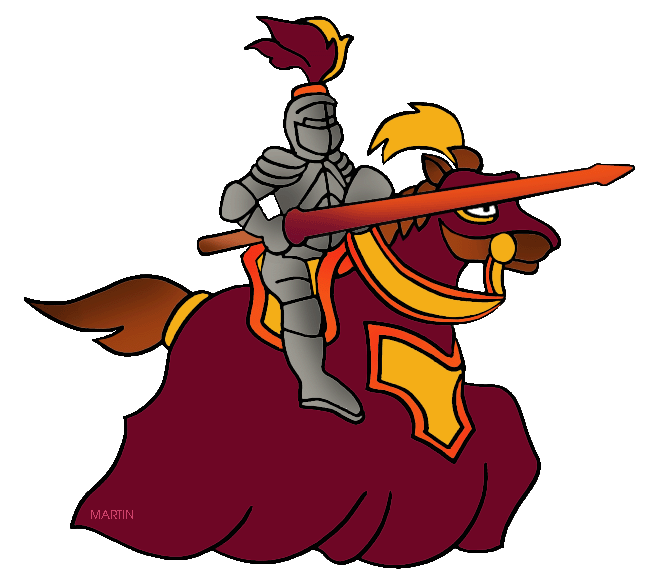All pages, squires and knights had to follow an elaborate code of conduct. This was called Chivalry. A knight pledged loyalty to their liege lord, promised to be brave in battle and protect the church and those weaker than themselves, and to be courteous to noblewomen. A knight’s code of conduct included mercy, humility, honor, sacrifice, faithfulness, courage, and graciousness. The code was to be followed at all times. In brief, knights swore to be the good guys!
Knights who did not obey the code of conduct faced public humiliation, especially those who behaved cowardly in battle. If found guilty of not following the code, his shield was cracked in two, his sword was cracked over his head, and he was put into a coffin and dragged to the church, where a mock funeral was held. Most men who were punished in this fashion were no longer knights. A few were given the chance to redeem themselves via the Crusades. In spite of the risk of public shame and loss of status, some knights were brutal in their treatment of the poor and helpless.
Chivalry, although a wonderful idea, promoted a far too often false image of a knight. Wandering troubadours (musicians) helped to promote this false image by singing ballads that presented knights as always perfect, always respectful, always loyal to church and lord, and who always treated ladies with utmost graciousness. Women especially loved the image and the ballads, and many believed that the code of conduct was followed by every knight. It was a dangerous thing to believe. Not every knight was a good guy, although most knights did try to live up to the requirement of bravery, at least on the battlefield.

